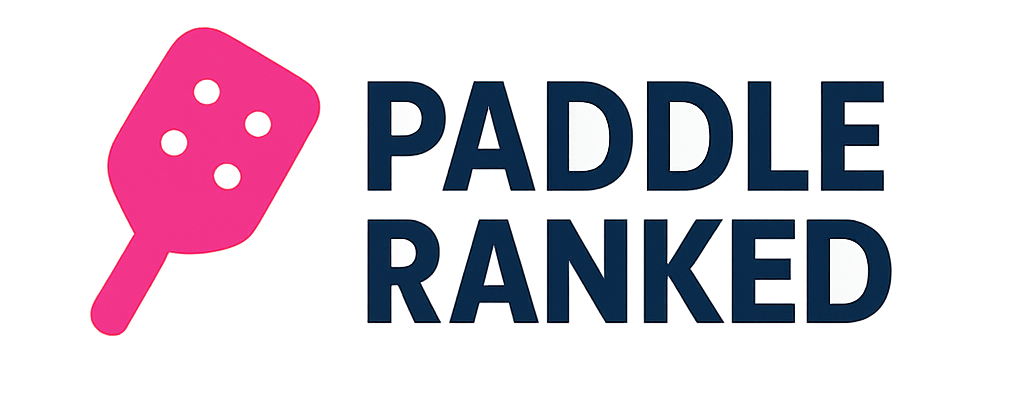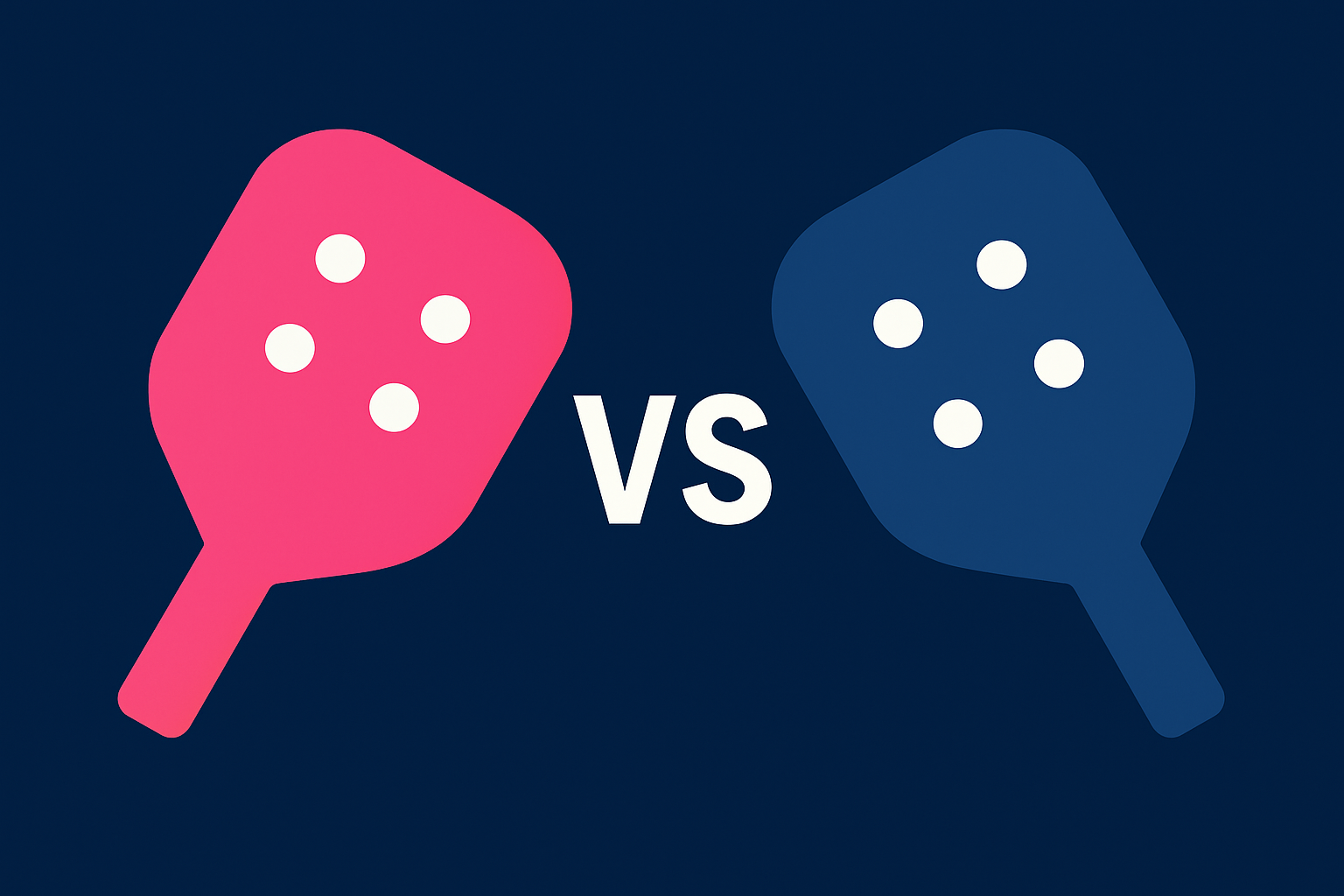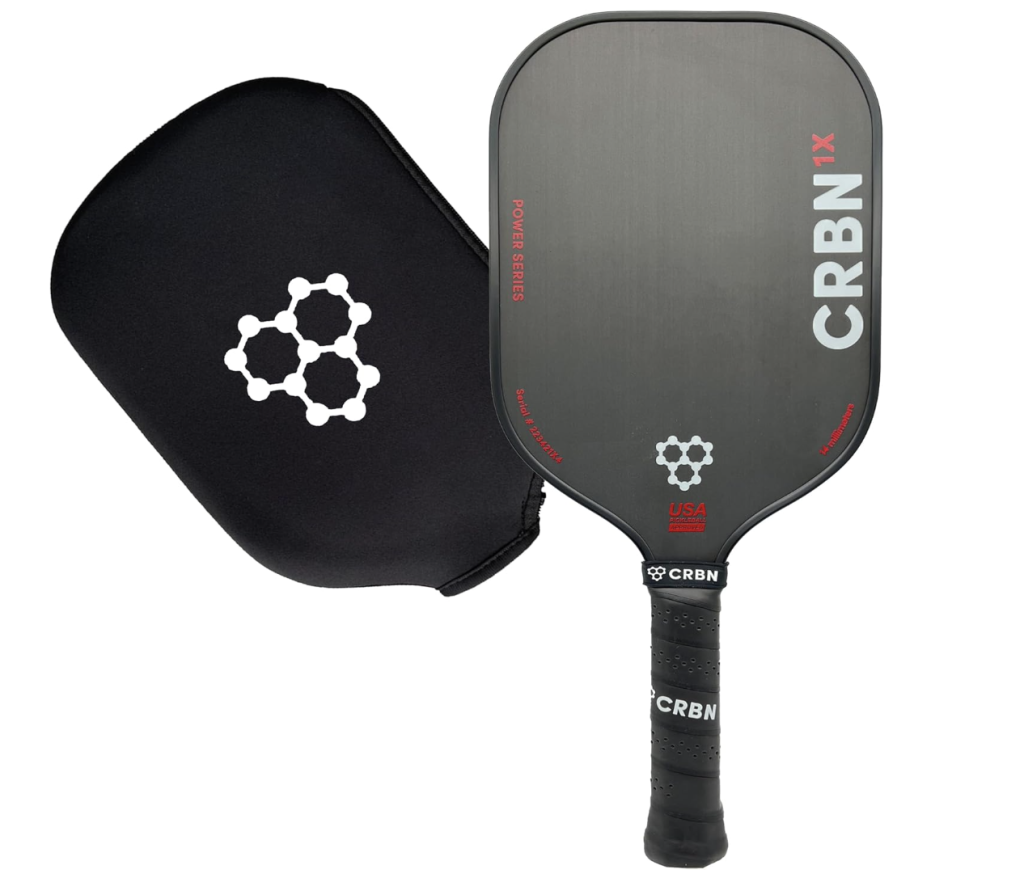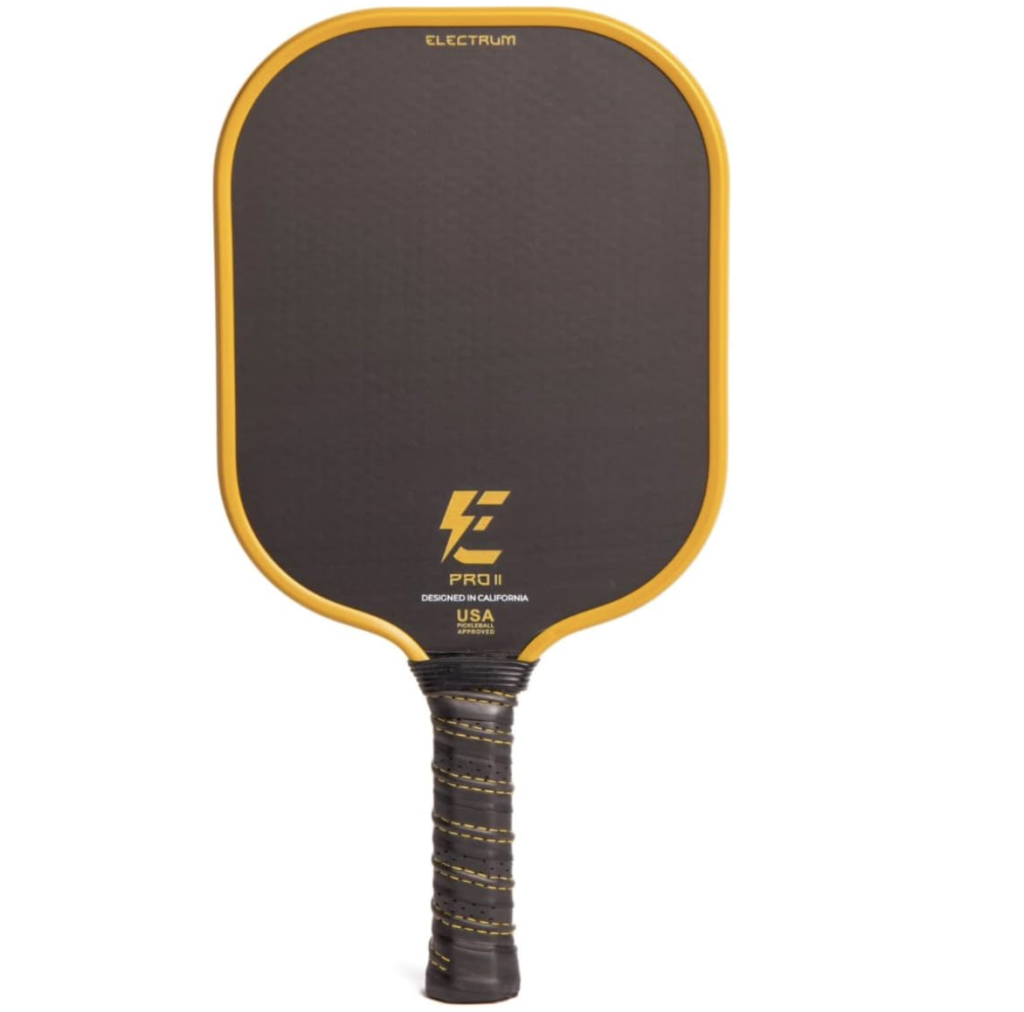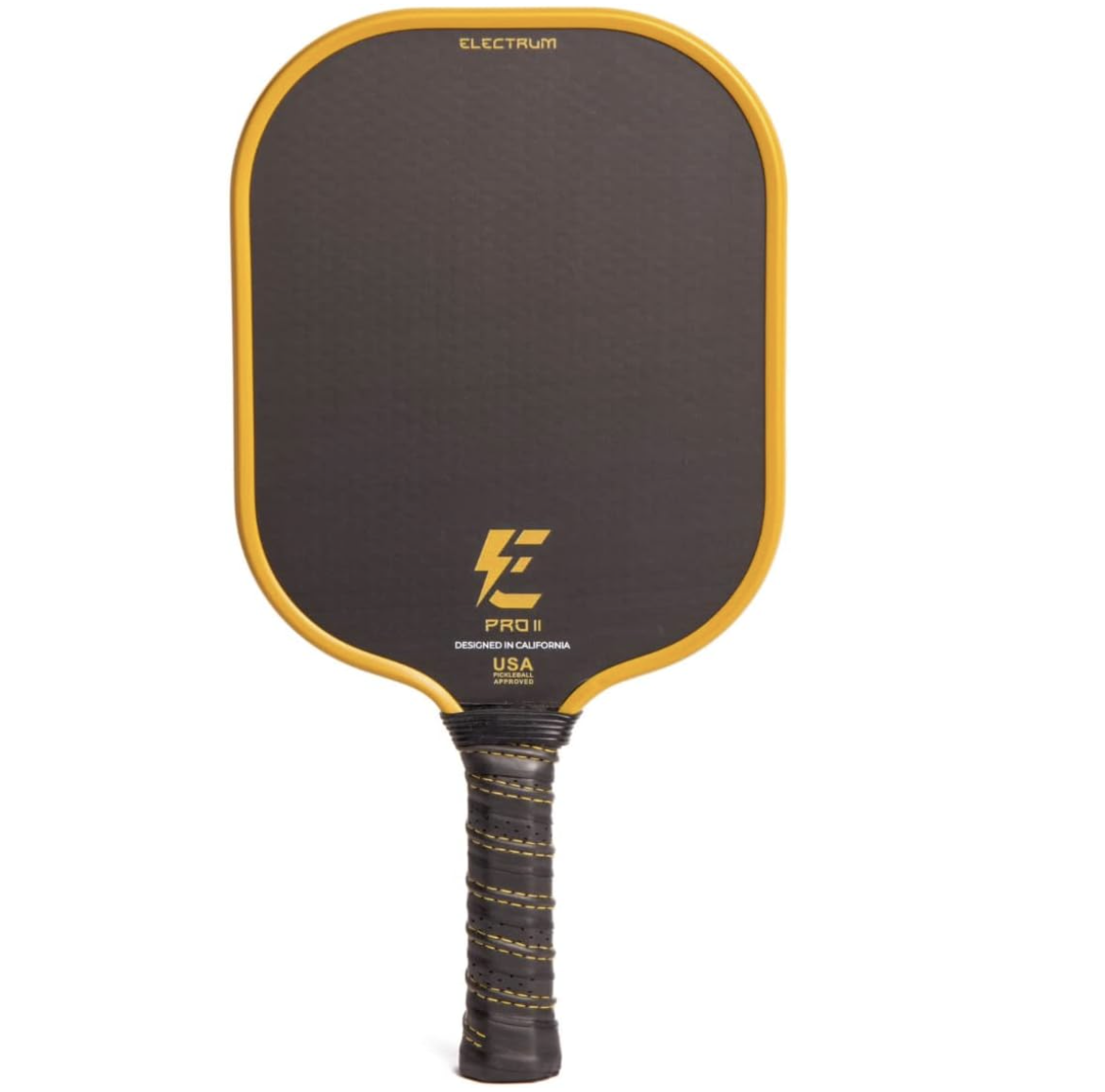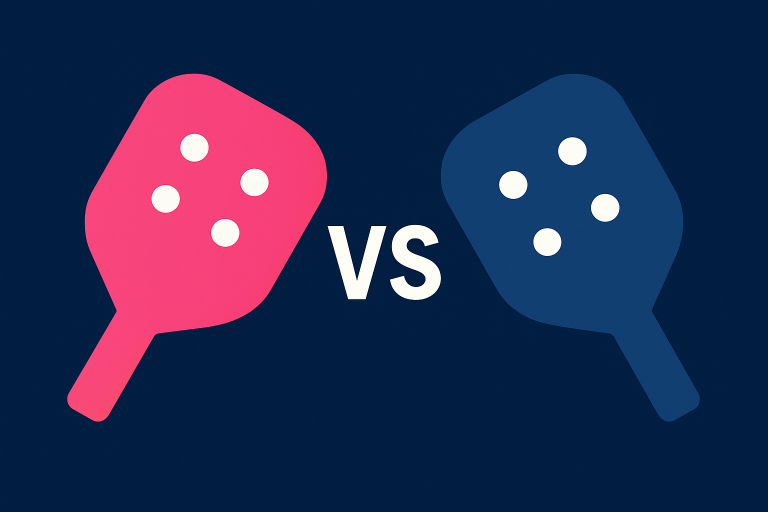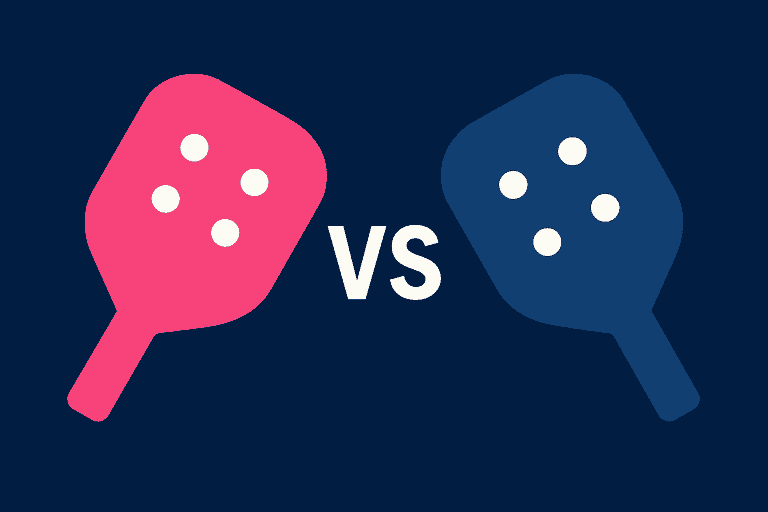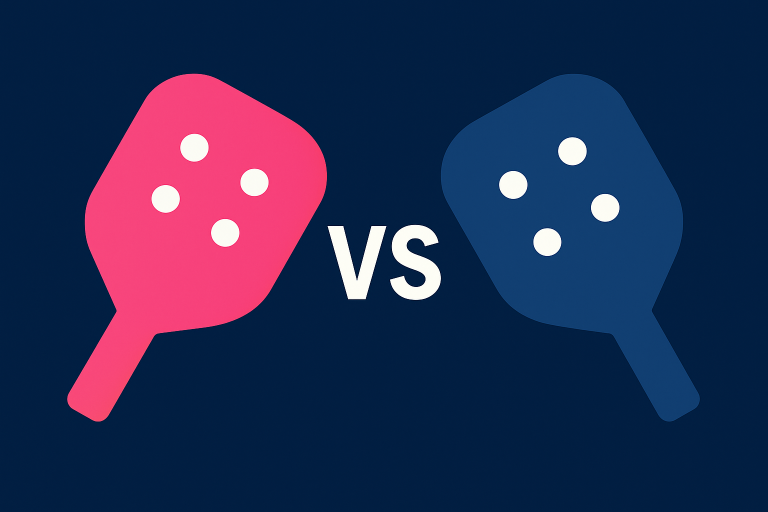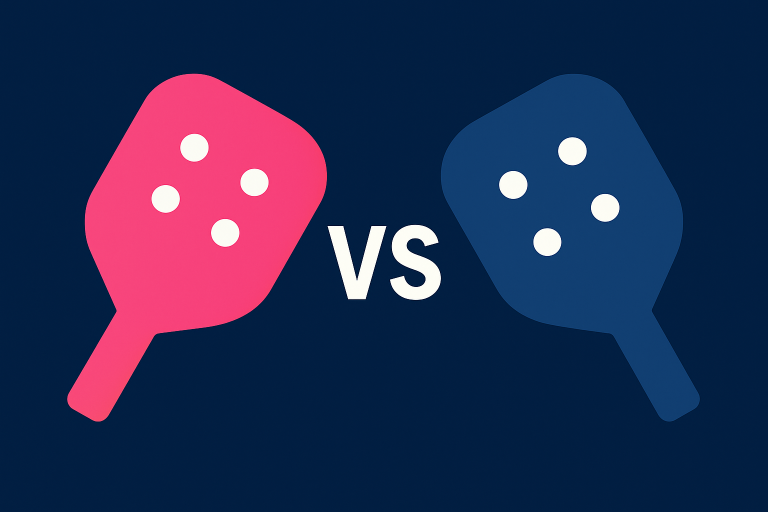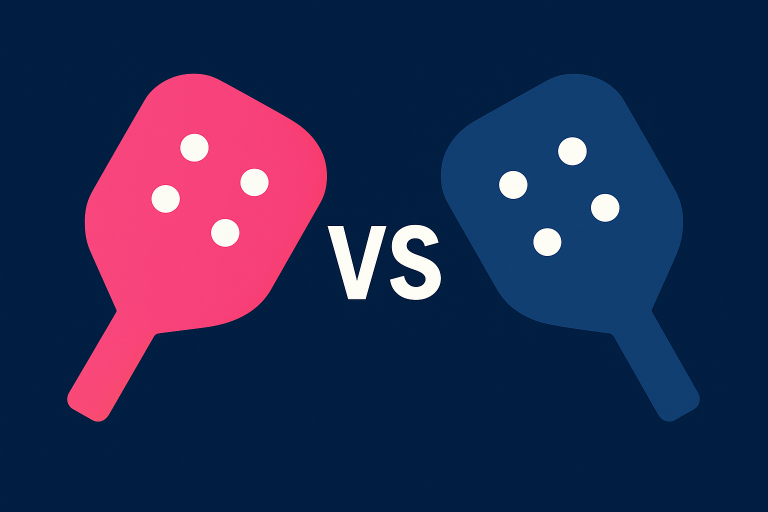Electrum Model E vs CRBN 1 — Classic Raw-Carbon Matchup (2025)
Updated September 2025
Raw carbon paddles changed pickleball. That grippy, sandpaper-like texture gave everyday players tour level spin and reshaped how we drop, drive, and counter. Two names that helped write that story are the Electrum Model E and the CRBN 1. On paper they look similar: both raw carbon, both control-forward, both extremely popular. On court, they feel different. The Model E leans into reach, spin, and plow through; the CRBN 1 doubles down on sweet spot forgiveness, balance, and touch.
If you’re deciding between them, this side by side will make the choice simple.
Takeaways at a glance
- Model E: Longer handle and face mean more leverage for two-handers and extra reach in singles. The swing feels weightier (in a good way) and produces heavy spin.
- CRBN-1: The 16 mm version is a sweetheart for resets and blocks; the 13 mm adds pop without losing the brand’s signature feel. Shape is more traditional and maneuverable.
Electrum Model E vs CRBN 1
CRBN-1 — Overview
Design & build
CRBN pairs a raw carbon face with either a 13 mm or 16 mm polypropylene core in a hybrid standard/elongated shape. The handle is 5.25 inches, which keeps two-handers in play without feeling tail-heavy. CRBN has refined durability in recent versions, and the face texture holds spin well with occasional cleaning.
On-court feel
This is the forgiving raw carbon many players fall in love with. The sweet spot is generous, the response is predictable, and touch comes easily. The paddle sits in that sweet lane where you get modern spin but don’t need tour-level mechanics to control it.
Where it shines
- Resets and dinks: The 16 mm especially is excellent at taking pace off the ball and parking it in the kitchen.
- Maneuverability: Quicker in tight hand battles than most elongated paddles.
- Versatility: Doubles, mixed, rec ladder, CRBN-1 is good to go anywhere.
What you give up
- Max spin ceiling: Still very spin friendly, just a tick lower than the Model E’s elongated leverage.
- Reach: The hybrid shape doesn’t stretch as far as the Electrum.
Best for
All court doubles players, improving intermediates, and anyone who values control and sweet spot forgiveness over sheer reach.
Electrum Model E — Overview
Design & build
Electrum wraps a true raw carbon face over a 16 mm poly core and stretches it into an elongated profile with a 5.5-inch handle. It’s built for modern patterns: roll the ball, counter with shape, and finish with reach. The perimeter and guard help the face hold up outdoors, where raw carbon can take a beating.
On court feel
Think silky grab on contact. The ball sits on the face a hair longer, which gives you confidence to shape topspin drives and carve slices on drops. The longer handle adds leverage for a two-handed backhand and makes counterpunching feel powerful rather than twitchy.
Where it shines
- Spin: Among raw-carbon paddles, the Model E consistently ranks near the top for bite. You can roll from awkward positions and still bring the ball down.
- Reach: Singles players love the coverage. In doubles, that extra half-step of reach bails you out on speed-ups to your outside shoulder.
- Plow through: Against pace, the paddle meets the ball with a steadier wall than most standard-shape peers.
What you give up
- Hand speed: The elongated build and higher swingweight mean it’s not the quickest at the kitchen. If you rely on lightning wrist flicks, you’ll notice the heft.
- Learning curve: If you’re moving up from a lighter fiberglass starter paddle, expect a few sessions to sync your timing.
Best for
Spin first players, counterpunchers, and anyone using a two handed backhand. If you play lots of singles or like to set points with heavy shape, the Model E feels like home.
Head to Head Breakdown
Spin Potential
Edge: Electrum Model E
Both are raw carbon, but the Model E’s elongated lever and pronounced face grab create a higher spin ceiling. Your heavy topspin drive will dip earlier, and your roll volleys feel nastier. CRBN-1 still spins very well, especially when the face is clean, but the Electrum wins the “how much can I bend this ball” contest.
Power & Drives
Split decision
- CRBN-1 (13 mm): Snappier ball exit and easier pop on flat drives. Great if you like to speed up first.
- Electrum Model E: Not as “poppy,” but it has plow through. When you set your feet and swing through the ball, it carries pace deep with reliable spin to keep it in.
Control & Soft Game
Edge: CRBN-1 (16 mm)
If your superpower is resets and long dink exchanges, the 16 mm CRBN-1 is a comfort blanket. It cushions pace without hot spots and gives you forgiveness when contact drifts off center. The Model E is precise, but it rewards cleaner contact and firmer technique.
Reach & Two-Handed Backhands
Edge: Electrum Model E
The longer face and 5.5-inch handle make two-handers and late reach-ins feel natural. It’s the better singles tool and a sneaky weapon against cross-court speed-ups.
Hand Speed at the Kitchen
Edge: CRBN-1
Lower swingweight equals quicker hands. If your game is built on hands battles and counters in tight windows, the CRBN-1 gets up to speed faster.
Durability
Slight edge: Electrum Model E
Both faces wear well with care, but the Model E’s edge guard helps protect from chips on gritty courts and paddle clashes. CRBN has improved durability in recent revisions; still, avoid car-trunk heat and clean the face with a damp microfiber to preserve grit.
Winner by Playstyle — Quick Matrix
| Playstyle | Pick |
|---|---|
| Singles player who values spin and reach | Electrum Model E |
| Doubles player prioritizing forgiveness and touch | CRBN-1 (16 mm) |
| All-court intermediate wanting balance | CRBN-1 |
| Advanced spin-heavy baseliner | Electrum Model E |
| Two-handed backhand or tennis convert | Electrum Model E |
| Kitchen-first counterpuncher | CRBN-1 |
Bottom line: choose Electrum Model E if your identity is shaped shots, reach, and spin-driven offense. Choose CRBN-1 if you live in the soft game and want a bigger margin for error when things speed up.
Mini Buying Tips
- 13 mm vs 16 mm (CRBN-1): 13 mm brings pop and a livelier face; 16 mm adds dwell and forgiveness. If you’re unsure, start at 16 mm for control.
- Grip size and handle: Two-handers tend to prefer longer handles; if you’re one-handed or have smaller hands, CRBN’s stock handle often feels just right.
- Weight: Stay midweight. Both paddles shine between 7.9 and 8.3 oz. Heavier builds add stability; lighter builds help hand speed.
Where to Buy
FAQ — Electrum Model E vs CRBN 1
Which paddle has more spin, Electrum Model E or CRBN-1?
The Model E. Its elongated leverage and grippy raw carbon face create a slightly higher spin ceiling. The CRBN-1 still spins very well, especially when cleaned regularly.
Which is better for doubles play?
CRBN-1 (16 mm). It’s more forgiving on off center contact and excels at resets, dinks, and counters in fast exchanges
Which paddle has more reach?
Electrum Model E—longer face and 5.5-inch handle. If you rely on a two-handed backhand or stretch volleys, this matters.
Which version of CRBN-1 should I buy, 13 mm or 16 mm?
Start with 16 mm for control and forgiveness. Choose 13 mm if you want extra pop and are comfortable managing touch.
Is the Model E too heavy for quick hands?
It carries more swingweight than the CRBN-1, so it’s slower at the kitchen. If your game is mostly hands battles, the CRBN-1 will feel quicker.
Which lasts longer?
Both faces hold up with care. The Model E’s edge guard offers extra chip protection, while recent CRBN builds have improved longevity. Keep both out of extreme heat and clean the faces with a damp microfiber to maintain texture.
Are these good for beginners?
They’re better suited to intermediate and up. If you’re brand new, consider a more forgiving starter and then step into raw carbon once your touch is consistent.
Do pros use Electrum or CRBN?
Yes. Both brands have strong pro-level representation and helped push raw-carbon tech into the mainstream.
Can I use a two handed backhand with CRBN-1?
Yes—the 5.25-inch handle accommodates most two-handers, though the Model E’s 5.5-inch handle provides a bit more leverage.
